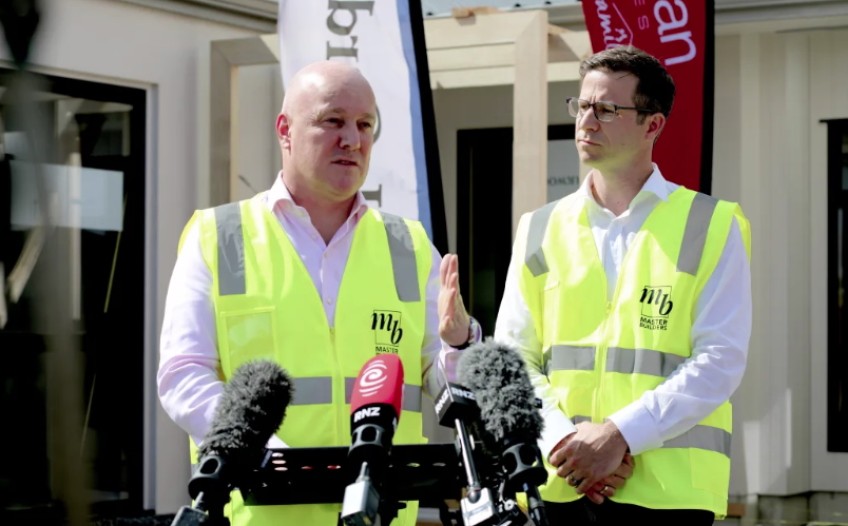Government announces shake-up of earthquake strengthening laws

The government says a new "risk-based" approach to earthquake strengthening will save building owners more than $8.2 billion across New Zealand, and reduce risk from derelict empty buildings.
The Building and Construction Minister Chris Penk said the current 'New Building Standard' used by engineers was too broad and inconsistent and would be scrapped.
The rules were brought in under 2017 changes following the Canterbury Earthquakes and the subsequent Royal Commission of Inquiry.
Replacement standards, called the Earthquake Prone Building system, will mean unreinforced masonry buildings with unsecured facades and walls facing public areas or above neighbouring properties will be deemed earthquake prone.
Prime Minister Christopher Luxon (left) and Building and Construction Minister Chris Penk. Photo: RNZ / Marika Khabazi
However, those under three storeys and in towns with under 10,000 people would no longer need strengthening, remediation or warning notices - and could be removed from the earthquake-prone register after having the facade secured.
Other concrete buildings of three storeys or more would be assessed using a new retrofit method focused on critical vulnerabilities that could lead to collapse.
Seismic risk zones would also be updated:
- Auckland, Northland and the Chatham Islands will be made exempt from earthquake rules due low seismic risk
- Coastal Otago including Dunedin will shift from 'low' to 'medium' risk
Requirements for fire safety and disability access would also be removed, and councils would be able to grant 15-year extensions for strengthening deadlines, including for building owners whose deadlines already expired, with new timeframes beginning from the date their extension application is received.
The 'priority' category - which currently requires hospitals, fire and police stations, schools and some other buildings to be remediated twice as fast as other buildings, would also be changed.
It would apply only to buildings that could block emergency services routes in an earthquake and unreinforced masonry buildings with parts that could fall on footpaths and roads with high levels of pedestrian and vehicle traffic, and deadlines would be extended. Hospitals and fire stations would be removed.
The new system would only affect buildings that "pose a genuine risk to human life in medium and high seismic zones," Penk said.
"This category includes concrete buildings three storeys or higher, and those constructed with unreinforced masonry.
"The risk of a facade falling on a pedestrian is simply lower in communities with fewer than 10,000 residents than it is in larger urban centres, because there are fewer people on the streets."
He said the requirements for fire safety and disability access to be upgraded alongside earthquake strengthening could add significantly to costs "and has discouraged owners from carrying out essential seismic safety work".
The government expected the changes to remove about 2900 buildings from the register, make remediation cheaper for a further 1440 buildings, and 880 would not need any remedial work, and only about 80 buildings would still require a full retrofit due to the risks posed.
The changes follow an independent review led by the Ministry of Business, Innovation and Employment. Penk also announced a four-year extension to strengthening deadlines when the review was announced in April 2024.
Penk said the review showed protecting human life must remain the top priority, but a fairer balance was needed between cost and the real risks buildings posed.
The current New Building Standard assesses existing buildings' expected seismic performance against that of a new to-code building - with buildings found to be under 34 percent considered earthquake prone and requiring remediation.
The government says more than 8000 buildings across the country now fit in this category, nearly 6000 of which still need remediation or demolition.





















